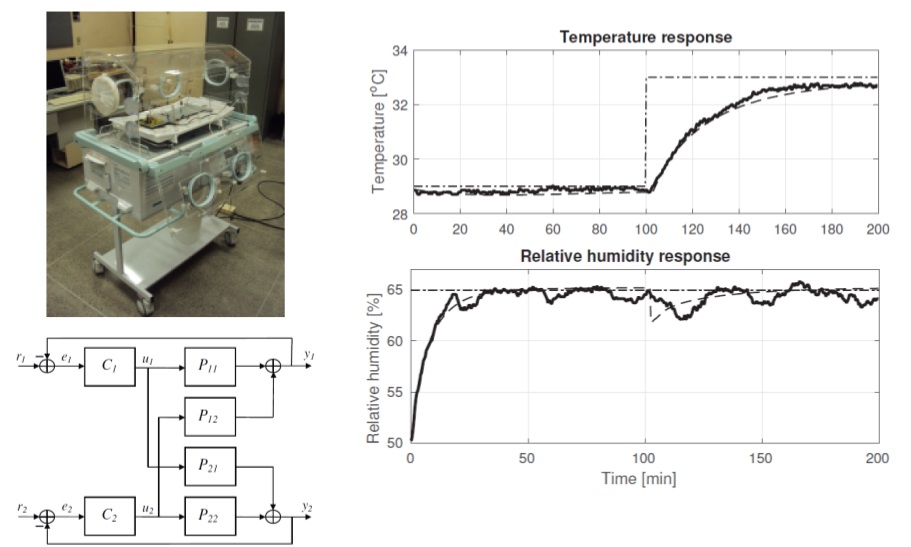The function of a neonatal incubator is to provide the newborn with a thermally comfortable environment. For a baby whose birth occurred prematurely, it is necessary to have a thermally neutral environment, similar to the maternal uterus.
Through the realization of a temperature and humidity control system, one can guarantee to the newborn an environment favorable to the growth and resistance against diseases due to thermal imbalance. Therefore, an appropriate control of temperature and relative humidity is associated with the comfort of the newborn.
The incubator can be understood as a closed environment where the newborn remains. There are found sensors that measure temperature and relative humidity. These variables are controlled using pulse width modulated signals (PWM) applied to a heating resistor and an ultrasonic humidifier. These devices are used to perform air circulation inside the incubator and thus it is possible to control the temperature and relative humidity.
Several control techniques have been successfully studied, tested and proven in the neonatal incubator. The interdependence between temperature and internal relative humidity allows, for example, the study of systems in which multiple variables are controlled and the delay of existing transport requires the use of delay compensation techniques.
The research group on Automation control and robotics (GPAR) has a prototype and a commercial model of neonatal incubator where the studies of temperature control and relative humidity are performed.

